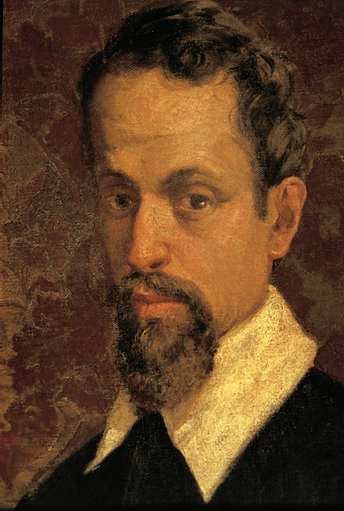Claudio Monteverdi (1567–1643)

One figure stood out above all others in music around 1600, just as Josquin Desprez had around 1500. Claudio Monteverdi, an enormously imaginative and innovative composer, also has the distinction of being the first great composer whose music was attacked for being too radical. Radical it was. Monteverdi has aptly been called “the last great madrigalist and the first great opera composer”; indeed, while his earliest madrigals are close in style to those of Thomas Weelkes, some of his later ones are more like small, self-
Monteverdi’s career was long and fortunate. He was a quick starter, publishing a little book of sacred songs while only fifteen, and he was still composing operas into his seventies. He first worked at the music-
After Orfeo, none of Monteverdi’s operas were printed, and some have been completely lost — a grievous loss indeed. All we have left of his Arianna is the heroine’s big lament, one of the greatest hits of the day, which Monteverdi published in several different arrangements. Fortunately, two late masterpieces have survived: The Return of Ulysses and The Coronation of Poppea.